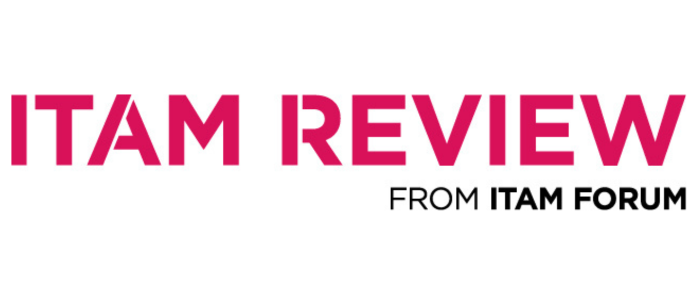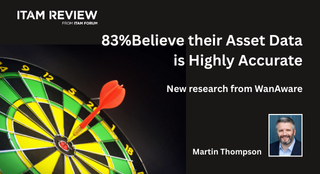Can We Optimise the Hidden Costs of ITAM?
(This article is by Kelly Yip, ITAM Thought Leader and Advisor, the ITAM Forum)
The ITAM world has changed significantly in recent years, with cloud and AI transforming the industry. With that change, people working in ITAM have also had to change. The question is, has the collective mindset changed enough? Let’s consider cost optimisation and the hidden costs of ITAM.
The way in which cost optimisation is managed today is very different to how it was managed just a few short years ago. One of the key differences is that today, the pinnacle of cost optimisation is often considered to be cloud migration. While most will agree this is often an excellent option for optimising costs, the question is whether this reflects true cost optimisation. Is it possible that in some cases, costs are just shifting from one budget area to another?
What are the challenges
The first problem is the huge volume of costs not being accounted for because they’re not typically considered ‘ITAM costs.’ This means when comparing and weighing up different scenarios, organisations might not be considering the full costs.
For example, most people would not consider air conditioning to be an IT asset or premises rental, yet, a server room needs both space and air conditioning. Recently, conversations around sustainability have inspired organisations to consider electricity usage and the carbon footprint of physical hardware. ITAM is somewhat behind in truly accounting for the full costs associated with on-premises IT equipment.
There are many stories of great cost savings associated with migrating servers to a cloud platform, and most cloud platforms offer calculators that will demonstrate the enormous cost savings that can be made. However, in reality, many associated costs may be missing from these calculations.
Hidden costs of ITAM
Often overlooked costs of migrating to the cloud include Data Transfer Fees, Cloud storage costs, as well as complex licensing models. This can result in overspend if not managed correctly. There is also the risk of overprovisioning resources. Furthermore, the need for additional staff or managed services grows as complexity increase. And, there’s little doubt that a hybrid environment results in added complexity.
Meanwhile, with on-premises, there is the cost of electricity, physical space, hardware maintenance and repairs. Then, there’s the assets themselves that depreciate over time, and ultimately, require costly disposal and recycling processes.
Moving from CAPEX to OPEX
In ITAM, moving from CAPEX to OPEX is commonly seen when migrating from the on-premises, upfront cost (CAPEX) model to the ongoing, pay as you go (OPEX) expense of cloud platforms or SaaS solutions.
For many, the move from high upfront costs is a welcome relief from sudden, unexpected expenditure. However, there is no guarantee that in the long-term, this will result in cost savings. There is also the possibility that having both CAPEX and OPEX ITAM costs makes it even more difficult to truly calculate real savings.
Cost Optimisation
The process of cost optimisation is simple on paper. It typically involves a comparison between multiple scenarios and the costs associated with each. Although, the complexity of a hybrid world makes this far more challenging.
The first step is to broaden the definition of an ITAM associated cost and extrapolate the missing cost data. This is not always simple to achieve. For example, the company’s electricity bill will not specify the costs associated with IT assets. While sustainability tools might help, these come with their own costs that then need to be accounted for.
Maintaining good historical purchase records might also help establish long-term trends, identify hidden costs, and enable you to factor these into scenario comparisons. Consider the costs associated with the hardware lifecycle and note that these should be pitched against the ongoing costs incurred within a cloud platform, as they represent additional savings.
One often overlooked factor to consider is that the simplicity of an environment directly affects the costs associated, whether that be lesser costs associated with managed services, or less time spent by staff managing the environment. This should be weighed up against more complex scenarios that perhaps involve smaller upfront costs with the time involved in managing the complexity factored into any cost analysis. When looking at this from a SAM perspective, utilising benefits such as ‘bring your own licenses’ can save significant money but also adds complexity and management challenges, which should be factored in.
Conclusion
Optimising the hidden costs of ITAM should be entirely possible but challenges remain regarding accuracy.
Looking forward, it seems logical that AI and automation will potentially play a big part in optimisation. It is becoming increasing possible to envision an AI tool that uses an organisation’s entire ITAM cost history to determine, for example, the exact moment when shifting a server over to a cloud platform becomes more cost effective in the long-term.
Can’t find what you’re looking for?
More from ITAM News & Analysis
-
83% of IT Managers Believe their Asset Data is Highly Accurate - Only 35% of the Business Agrees
New and interesting research from WanAware hits at the nub of the disconnect many IT Asset Managers might feel about the value they deliver. The ‘Closing the ITAM Confidence Gap. 2025 Survey Insights for IT Leaders’ ... -
Microsoft Q4: Cloud and AI Results Drive Record Revenue
On 30th July 2025, Microsoft released its much-anticipated FY25 Q4 earnings report. The results follow a surprisingly strong Q3, which exceeded the expectations of some of the most optimistic investors. The latest Q4 results continue with ... -
10 Strategic Lessons for Tackling Compliance, Audits, and Software Licensing Risk in 2025
The ITAM Forum’s 2025 global ITAM research report in partnership with Azul reveals some fascinating insights into the financial, operational, and compliance risks involved in software licensing and audits. This article provides a high-level overview of ...
Podcast
ITAM training
Similar Posts
-
83% of IT Managers Believe their Asset Data is Highly Accurate - Only 35% of the Business Agrees
New and interesting research from WanAware hits at the nub of the disconnect many IT Asset Managers might feel about the value they deliver. The ‘Closing the ITAM Confidence Gap. 2025 Survey Insights for IT Leaders’ ... -
Microsoft Q4: Cloud and AI Results Drive Record Revenue
On 30th July 2025, Microsoft released its much-anticipated FY25 Q4 earnings report. The results follow a surprisingly strong Q3, which exceeded the expectations of some of the most optimistic investors. The latest Q4 results continue with ... -
10 Strategic Lessons for Tackling Compliance, Audits, and Software Licensing Risk in 2025
The ITAM Forum’s 2025 global ITAM research report in partnership with Azul reveals some fascinating insights into the financial, operational, and compliance risks involved in software licensing and audits. This article provides a high-level overview of ... -
Broadcom vs Siemens AG - A Brewing Storm
The ongoing legal battle between VMware (under Broadcom ownership) and Siemens is yet another example of why ITAM goes far beyond license compliance and SAM. What might, at first glance, appear to be a licensing dispute, ...




